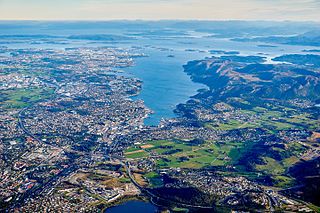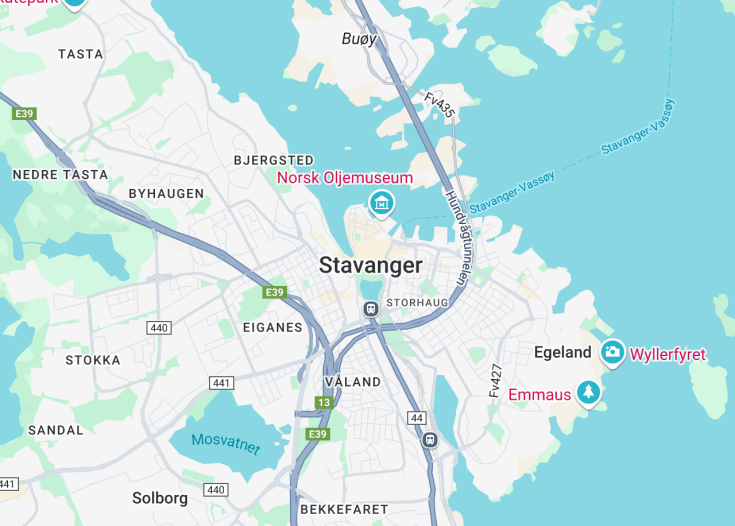Stavanger, located in southwestern Norway, stands as a captivating blend of ancient history and modern comforts. Renowned for its well-preserved wooden buildings dating back to the 18th century, the city also serves as a gateway to the majestic fjords. The vibrant waterfront area, bustling with cafes and boutiques, contrasts with the serene landscapes that are just a short journey away. Stavanger offers a unique mix of cultural festivals, museums, and outdoor activities, making it a perfect destination for both history enthusiasts and nature lovers alike.
When visiting Stavanger, make sure to explore the Old Town, where cobblestone streets and historic wooden houses provide a picturesque step back in time.
Plan a trip to the nearby Lysefjord to witness the awe-inspiring Preikestolen (“Pulpit Rock”), which offers breathtaking views over the fjord.
Top things to do & see in Stavanger
Select the following sights and activities to discover best tickets and tours available in Stavanger.
Stavanger: A Gateway to Norway’s Natural Beauty
| Country | Norway |
| Time in Stavanger | GMT+1 |
| Language spoken | Norwegian |
| Population | 132,102 (Source: Statistics Norway, 2023) |
| Currency | Norwegian Krone (NOK kr) |
| Airports |
|
Stavanger, located in the Rogaland county of Norway, is a vibrant city rich with history and culture. Known for its preserved wooden house settlements, bustling harbor, and proximity to the Norwegian fjords, Stavanger presents a unique combination of old-world charm and modern conveniences, making it a popular spot for both tourists and historians alike. The city’s economy has thrived significantly due to the oil industry since the 1970s, making it known as the Oil Capital of Norway. Besides its economic significance, Stavanger is also home to several museums, including the Norwegian Petroleum Museum, which offers insights into the offshore industry. Furthermore, the city’s culture is bolstered by numerous events and festivals, most notably the annual Stavanger Jazz Festival which attracts international artists and jazz enthusiasts.
Where is Stavanger?
Stavanger is situated in the southwestern part of Norway, offering a strategic gateway to the majestic fjords and North Sea beaches.
Distances:
| Route | Distance by car | Time by car |
|---|---|---|
| Oslo to Stavanger | 467 km | 7 hrs 30 min |
| Bergen to Stavanger | 209 km | 4 hrs 45 min |
| Trondheim to Stavanger | 790 km | 12 hrs 5 min |
What is Stavanger famous for?
Stavanger is famous for its role in the oil industry and its proximity to the North Sea, making it a crucial city in Norway’s petroleum activities. Additionally, its beautifully preserved wooden houses in the old part of the city add to its historical ambiance.
History
Prehistoric Times to Middle Ages
The region around Stavanger, Norway, has been inhabited since the end of the Ice Age, as evidenced by ancient artifacts and rock carvings that suggest early human presence. By the Viking Age, starting in the late 8th century, Stavanger had become an important center of trade and maritime activities. The establishment of Stavanger as a city, however, is traditionally dated to 1125 when the Stavanger Cathedral was completed during the reign of King Sigurd the Crusader.
1125-1700: Religious and Economic Growth
During the medieval period, Stavanger’s growth was closely linked to the cathedral, which became the focal point of religious life in southwestern Norway. The city was also a significant religious center, leading to increased administrative importance and the establishment of merchant guilds. By the 15th century, Stavanger had developed a thriving herring fishery, which significantly boosted the local economy and continued for several centuries.
1700-1900: Industrialization and Expansion
The 18th and 19th centuries saw the gradual decline of Stavanger’s traditional industries like shipping and fisheries. However, the city adapted by harnessing the emerging opportunities brought about by industrialization. Notably, Stavanger became a hub for canning industries, particularly sardines, from the late 19th century. This industry transformed the city’s economy and contributed to significant population growth.
1900-Present: Oil Era and Modernisation
The discovery of oil in the North Sea in the late 1960s turned Stavanger into Norway’s oil capital. This new wealth led to rapid economic growth and societal changes, with investments in cultural institutions and infrastructure. Today, Stavanger balances its historic charm with a vibrant contemporary culture, marked by museums, arts, and an increasingly diverse population.
Visit Stavanger
What to see and do in Stavanger
Stavanger, a blend of old charm and new dynamics, offers a variety of attractions and activities. The old town, Gamle Stavanger, is famous for its well-preserved wooden houses and cobblestone streets, giving visitors a glimpse into the past. The Norwegian Petroleum Museum and Stavanger Art Museum cater to those interested in history and the arts, respectively. For outdoor enthusiasts, Preikestolen (Pulpit Rock) provides a challenging hike with a rewarding panoramic view of the fjord below. Additionally, the city’s proximity to the fjords makes it a perfect base for exploring these dramatic natural landscapes.
- Explore Gamle Stavanger’s historic houses
- Visit the Norwegian Petroleum Museum
- Hike to Pulpit Rock
- Discover local art at Stavanger Art Museum
Annual Events in Stavanger
Stavanger hosts several annual events that attract both locals and tourists. The Stavanger Oil Festival in early August celebrates the city’s petroleum industry with exhibitions and funfairs. The Nuart Festival, held in September, is a significant event for street art lovers, showcasing international and local street artists. The Gladmat Food Festival, around late July, offers a taste of local and international cuisine, drawing food enthusiasts from across the globe.
Best time to visit Stavanger
The best time to visit Stavanger is from late spring to early autumn, particularly between May and September, when the weather is most favorable. This period offers extended daylight hours, allowing more time for sightseeing and outdoor activities. Additionally, most of the city’s festivals and cultural events occur during these months, making it an ideal time for a visit.
Is Stavanger worth visiting?
Stavanger is undoubtedly worth a visit. With its unique combination of historical significance and stunning natural beauty, the city offers a rich tapestry of experiences. From the architectural delights of its old town to the breathtaking views at Pulpit Rock, Stavanger caters to history buffs, art lovers, and outdoor enthusiasts alike. Moreover, its vibrant cultural scene and numerous festivals provide something for everyone, making it a must-visit destination in Norway.









